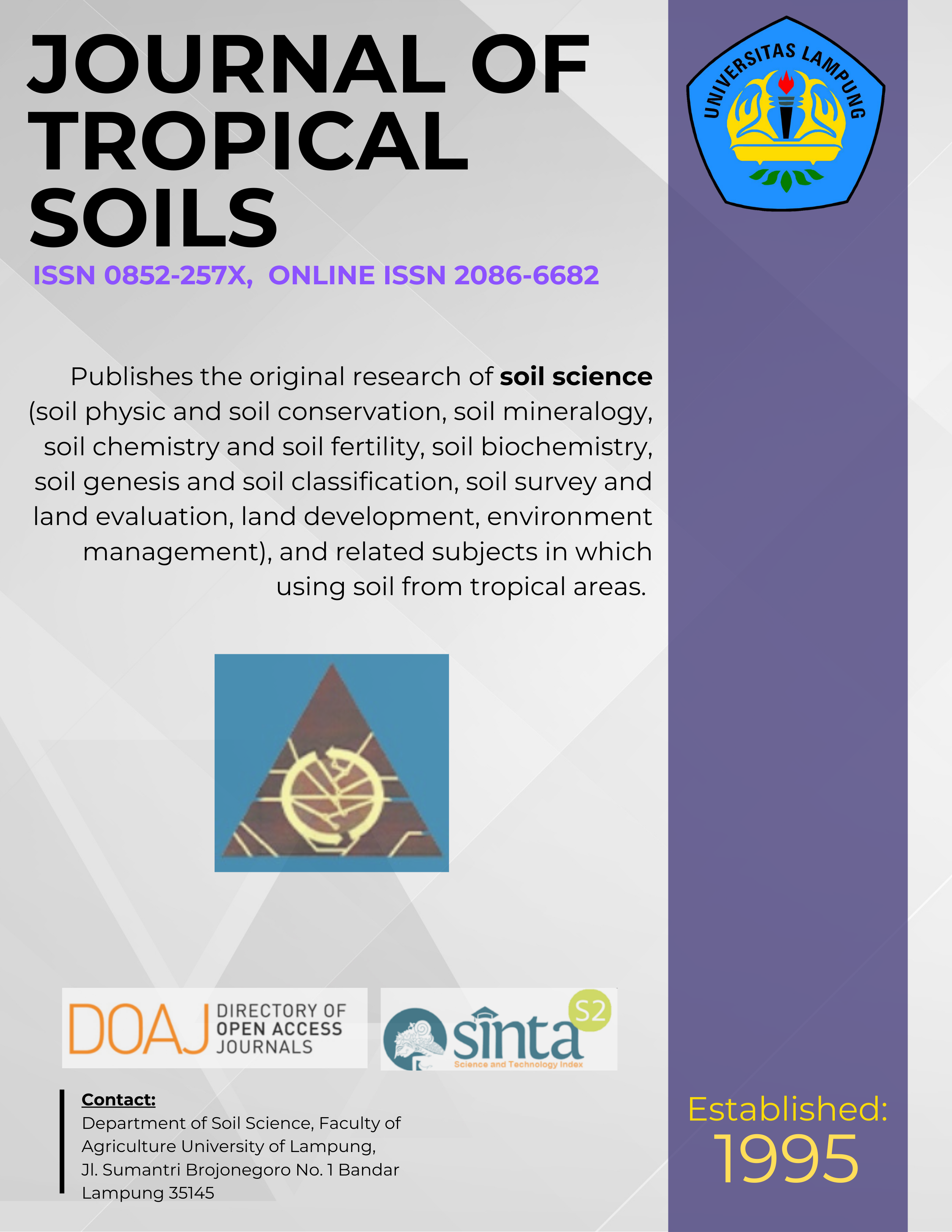Estimation of the Potential Carbon Emission from Acrotelmic and Catotelmic Peats
Main Article Content
Abstract
Agricultural development on peatland in Indonesia has been constrained by the presence of environment issues in relation to the release of greenhouse gases (GHGs) particularly carbon dioxide (CO2) and methane (CH4) to the atmosphere. This study was aimed to predict the potential carbon emission based on carbon stocks in acrotelmic and catotelmic peats with the reference of groundwater level of peatland. The results showed that groundwater levels have played an important role in carbon release, which has close relationship with water regime of the upper layer of peats that influenced by oxidative and reductive conditions of the land. From the layer that having groundwater level fluctuations during the period from rainy to dry season (acrotelmic peat), the emissions were mostly dominated by CO2 release, while from permanent reductive-layer (catotelmic peat) was not detected. The decrease of groundwater level from -49.6 to -109 cm has clearly influenced carbon emission. From each decreasing 1.0 cm groundwater level, CO2 emission measured during the period of February - October 2013 was calculated to yield about 0.37 Mg ha-1 yr-1.
Keywords: Acrotelmic and catotelmic peat, carbon emission, groundwater level
[How to Cite: Siti N, S Sabiham, B Nugroho and Di Nursyamsi. 2014. Estimation of the Potential Carbon Emission from Acrotelmic and Catotelmic Peats. J Trop Soils 19(2): 91-99. Doi: 10.5400/jts.2014.19.2.91]
Â
Â
Â
Downloads
Article Details
Issue
Section
License for Authors
Authors who publish with this journal agree to the following terms:
- Authors retain copyright and grant the journal right of first publication with the work simultaneously licensed under a Creative Commons Attribution License that allows others to share the work with an acknowledgement of the work's authorship and initial publication in this journal.
- Authors are able to enter into separate, additional contractual arrangements for the non-exclusive distribution of the journal's published version of the work (e.g., post it to an institutional repository or publish it in a book), with an acknowledgement of its initial publication in this journal.
- Authors are permitted and encouraged to post their work online (e.g., in institutional repositories or on their website) prior to and during the submission process, as it can lead to productive exchanges, as well as earlier and greater citation of published work (See The Effect of Open Access).
License for Regular Users
Other regular users who want to cite, distribute, remix, tweak, and build upon author’s works, even for commercial purposes, should acknowledge the work’s authorship and initial publication in this journal, licensed under a Creative Commons Attribution License.

